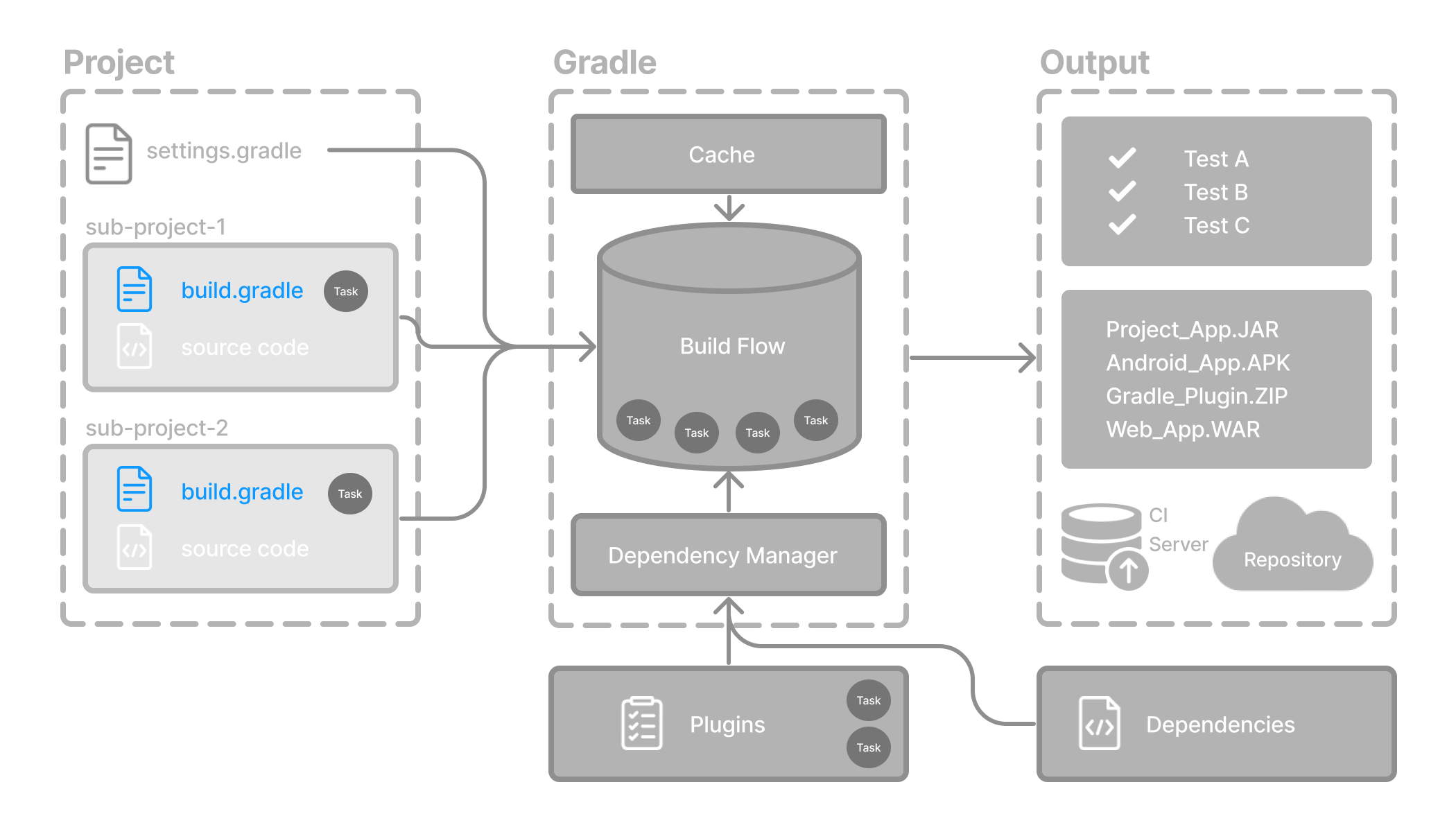Generally, a build script details build configuration, tasks, and plugins.

Every Gradle build comprises at least one build script.
In the build file, two types of dependencies can be added:
-
The libraries and/or plugins on which Gradle and the build script depend.
-
The libraries on which the project sources (i.e., source code) depend.
Build scripts
The build script is either a build.gradle file written in Groovy or a build.gradle.kts file in Kotlin.
The Groovy DSL and the Kotlin DSL are the only accepted languages for Gradle scripts.
Let’s take a look at an example and break it down:
plugins {
id("application") (1)
}
application {
mainClass = "com.example.Main" (2)
}| 1 | Add plugins. |
| 2 | Use convention properties. |
plugins {
id 'application' (1)
}
application {
mainClass = 'com.example.Main' (2)
}| 1 | Add plugins. |
| 2 | Use convention properties. |
1. Add plugins
Plugins extend Gradle’s functionality and can contribute tasks to a project.
Adding a plugin to a build is called applying a plugin and makes additional functionality available.
plugins {
id("application")
}The application plugin facilitates creating an executable JVM application.
Applying the Application plugin also implicitly applies the Java plugin.
The java plugin adds Java compilation along with testing and bundling capabilities to a project.
2. Use convention properties
A plugin adds tasks to a project. It also adds properties and methods to a project.
The application plugin defines tasks that package and distribute an application, such as the run task.
The Application plugin provides a way to declare the main class of a Java application, which is required to execute the code.
application {
mainClass = "com.example.Main"
}In this example, the main class (i.e., the point where the program’s execution begins) is com.example.Main.
Consult the Writing Build Scripts page to learn more.
Next Step: Learn about Dependency Management >>